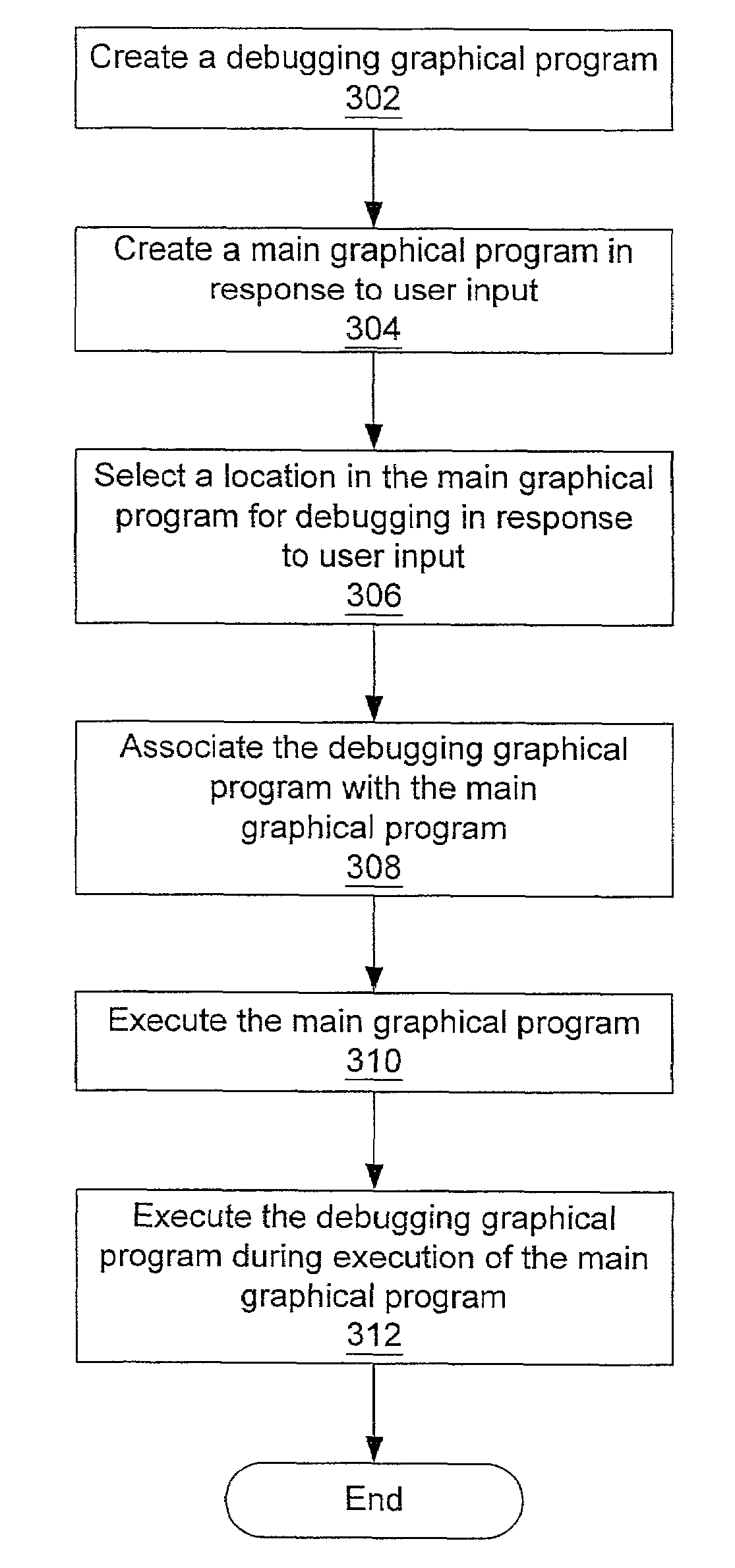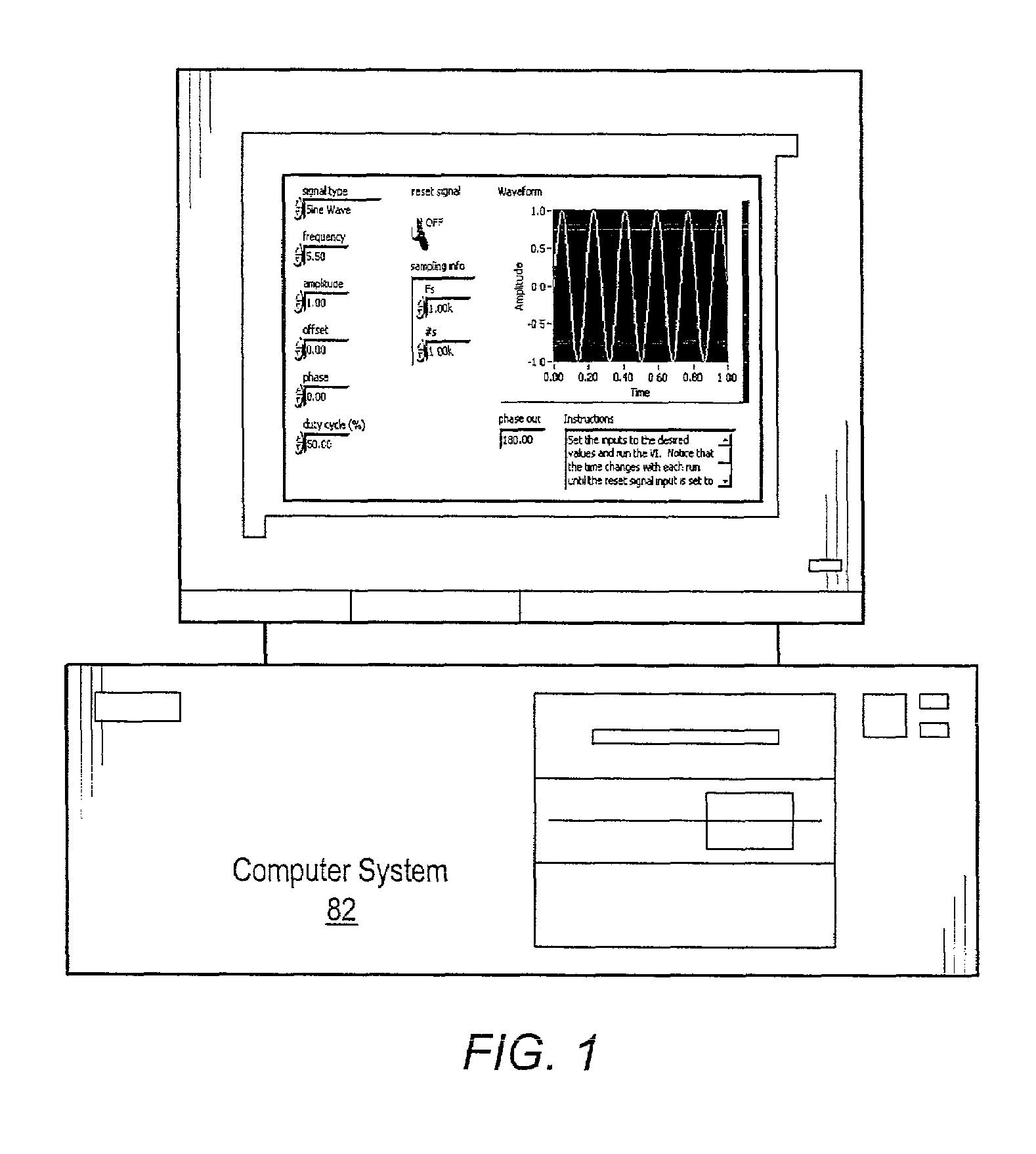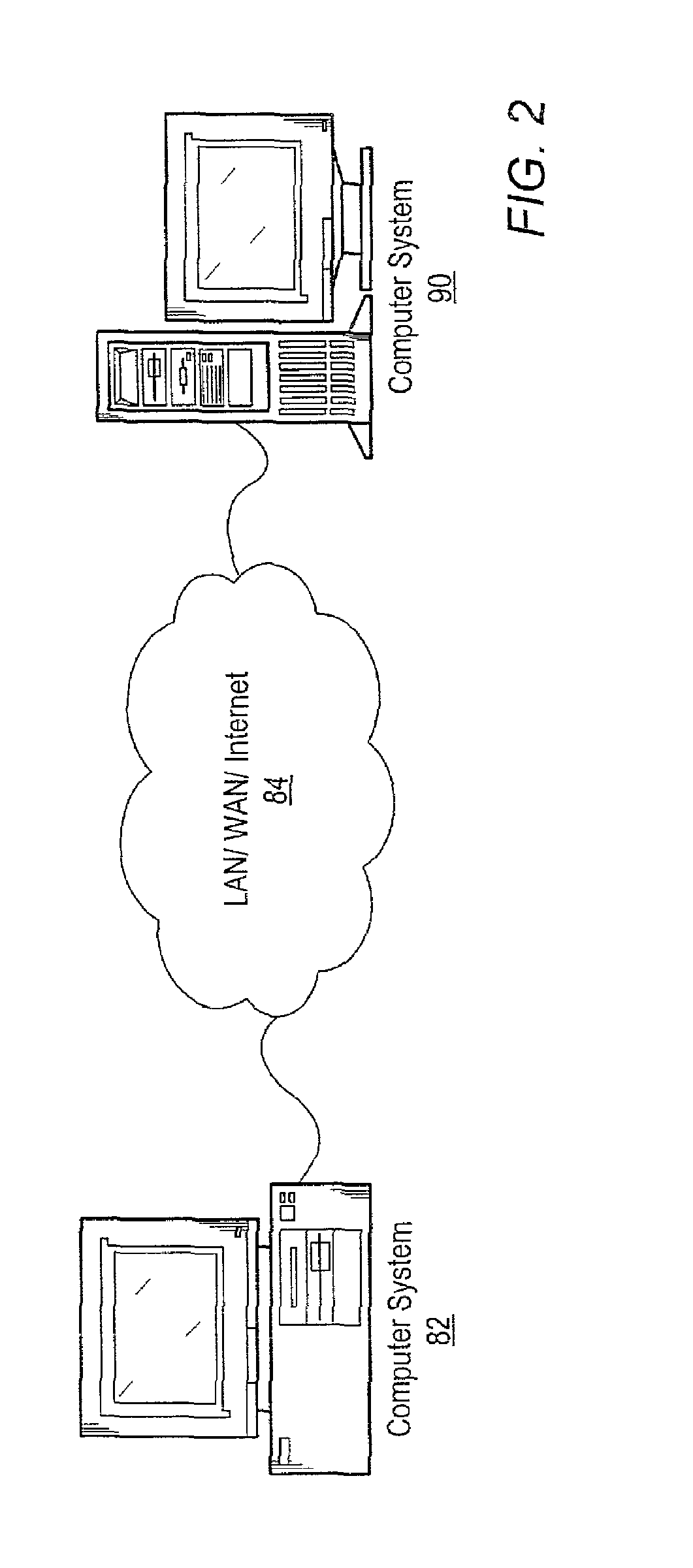System and method for analyzing a graphical program using debugging graphical programs
a graphical program and program technology, applied in the field of graphical programming, can solve the problems of complex task of programming a computer system to model or implement a process, user's programming skills and ability to interact with the computer system often become a limiting factor in the achievement of optimal utilization of the computer system, and user's inability to fully grasp techniques, etc., to achieve the effect of simple graphical programming techniques
- Summary
- Abstract
- Description
- Claims
- Application Information
AI Technical Summary
Benefits of technology
Problems solved by technology
Method used
Image
Examples
Embodiment Construction
Incorporation by Reference
[0043]The following references are hereby incorporated by reference in their entirety as though fully and completely set forth herein:
[0044]U.S. Pat. No. 4,914,568 titled “Graphical System for Modeling a Process and Associated Method,” issued on Apr. 3, 1990.
[0045]U.S. Pat. No. 5,481,741 titled “Method and Apparatus for Providing Attribute Nodes in a Graphical Data Flow Environment”.
[0046]U.S. Pat. No. 5,652,909 titled “Method and Apparatus for Providing Autoprobe Features in a Graphical Data Flow Diagram”.
[0047]The LabVIEW and BridgeVIEW graphical programming manuals, including the “G Programming Reference Manual”, available from National Instruments Corporation, are also hereby incorporated by reference in their entirety.
FIG. 1—Computer System
[0048]FIG. 1 illustrates a computer system 82 operable to create and / or execute a graphical program. The computer system 82 may be configured to implement various embodiments of the present invention. One embodiment ...
PUM
 Login to View More
Login to View More Abstract
Description
Claims
Application Information
 Login to View More
Login to View More - R&D
- Intellectual Property
- Life Sciences
- Materials
- Tech Scout
- Unparalleled Data Quality
- Higher Quality Content
- 60% Fewer Hallucinations
Browse by: Latest US Patents, China's latest patents, Technical Efficacy Thesaurus, Application Domain, Technology Topic, Popular Technical Reports.
© 2025 PatSnap. All rights reserved.Legal|Privacy policy|Modern Slavery Act Transparency Statement|Sitemap|About US| Contact US: help@patsnap.com



